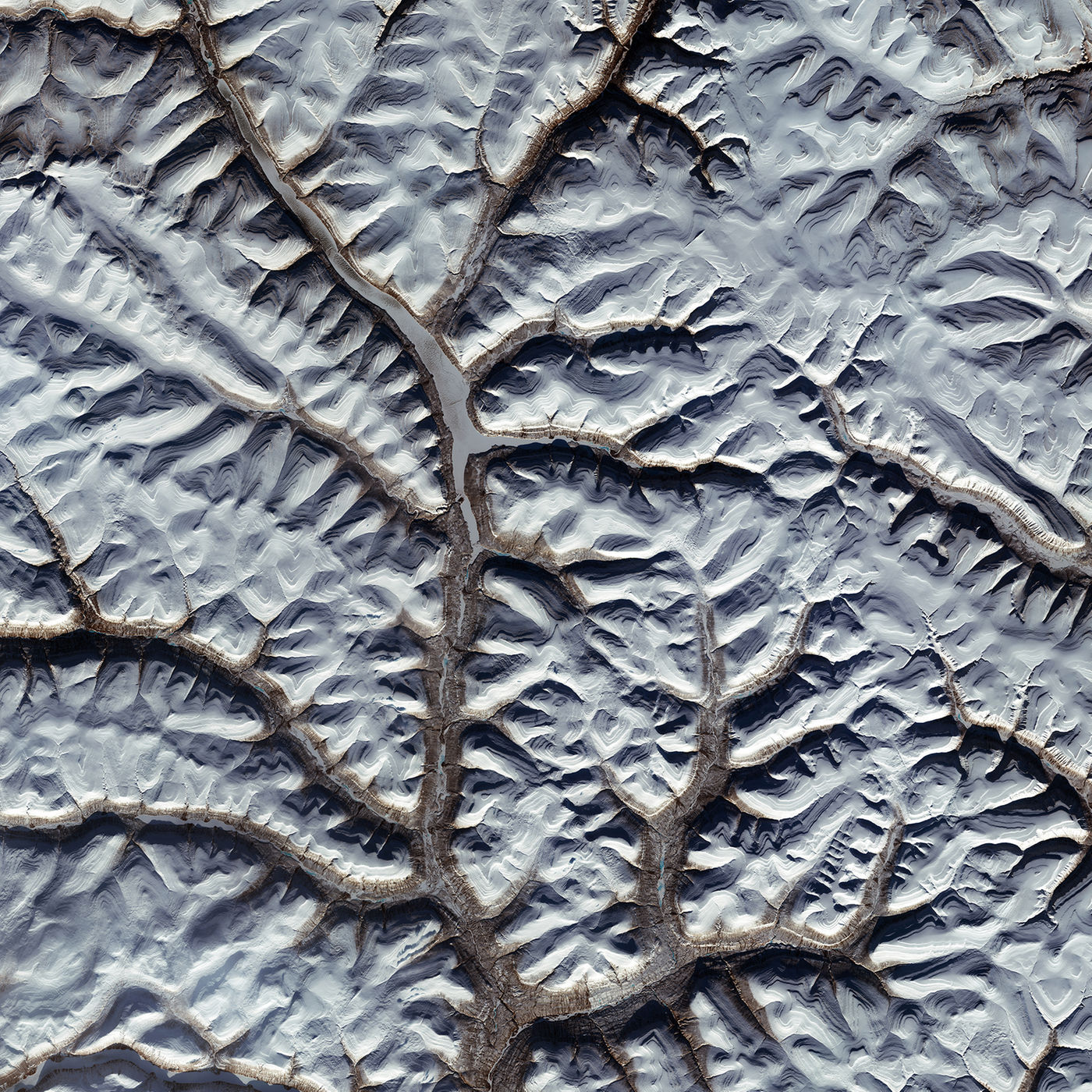Snowy 'Veins' of Siberia Captured in Haunting Image from Space

The remote and frosty landscape of Siberia looks like a tree's snow-covered roots or veins in a newly released photo taken from space.
The European Space Agency's (ESA) Copernicus Sentinel-2A satellite captured the detailed topography of the snowy Putorana Plateau in central Siberia on March 2. The image highlights the region's stark and branching appearance, created by the area's flat-topped mountains and intricate lake and river systems.
Flat-topped mountains are formed by plume volcanism. In this geological process, a large amount of magma seeps through the Earth's surface, forming a miles-thick blanket over the area. As the blanket solidifies, cracks form that fill with water and erode over time. According to the ESA, this process created the Putorana Plateau's rivers and unique, elongated lakes, such as Lake Ayan, which can be seen in the upper-central part of the image. [Earth from Above: 101 Stunning Images from Orbit]
The plateau is part of the Putoransky State Nature Reserve, a UNESCO World Heritage Site. (UNESCO World Heritage Sites mark places of special cultural or physical significance.)
Putoransky is virtually untouched by humans, and at about 60 miles (100 kilometers) north of the Arctic Circle, the area is one of the few sites in the Arctic with complete ecosystems and abundant plant species.
The area serves as a major reindeer migration route, which is "an increasingly rare natural phenomenon," according to the European Space Agency. The animals can travel 3,000 miles (4,800 km) annually, but their numbers in the wild have diminished as climate change impacts their Arctic habitat, according to scientists.
Original article on Live Science.
Get the Space.com Newsletter
Breaking space news, the latest updates on rocket launches, skywatching events and more!
Join our Space Forums to keep talking space on the latest missions, night sky and more! And if you have a news tip, correction or comment, let us know at: community@space.com.

Kacey Deamer is a journalist for Live Science, covering planet earth and innovation. She has previously reported for Mother Jones, the Reporter's Committee for Freedom of the Press, Neon Tommy and more. After completing her undergraduate degree in journalism and environmental studies at Ithaca College, Kacey pursued her master's in Specialized Journalism: Climate Change at USC Annenberg. Follow Kacey on Twitter.










